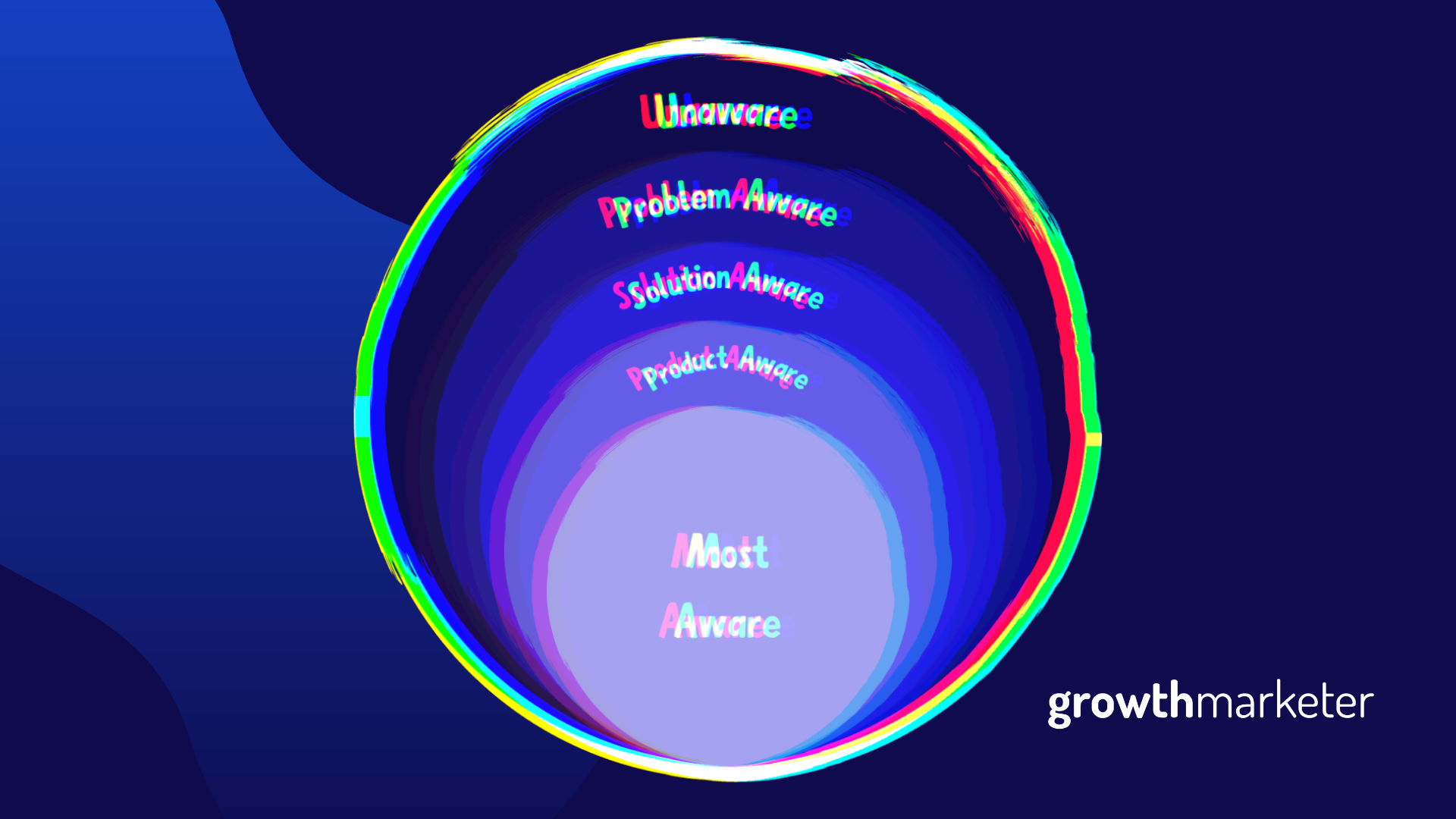The 5 Stages of Awareness is a simple copywriting framework popularized by Eugene Schwartz in his 1966 book called Breakthrough Advertising. The basic premise is that it’s not enough to have a great product—or service—to sell. You also need to meet the potential customer where they’re at, in their current frame of mind.
Introducing Schwartz’s 5 Stages of Awareness
And that’s where Schwartz’s 5 Stages of Awareness comes in. What he is referring to is the degree to which your prospect knows about the problem they need to solve, the solutions that exist to solve it, the various products that can help, and how—and why—they should get your product out of all available options.
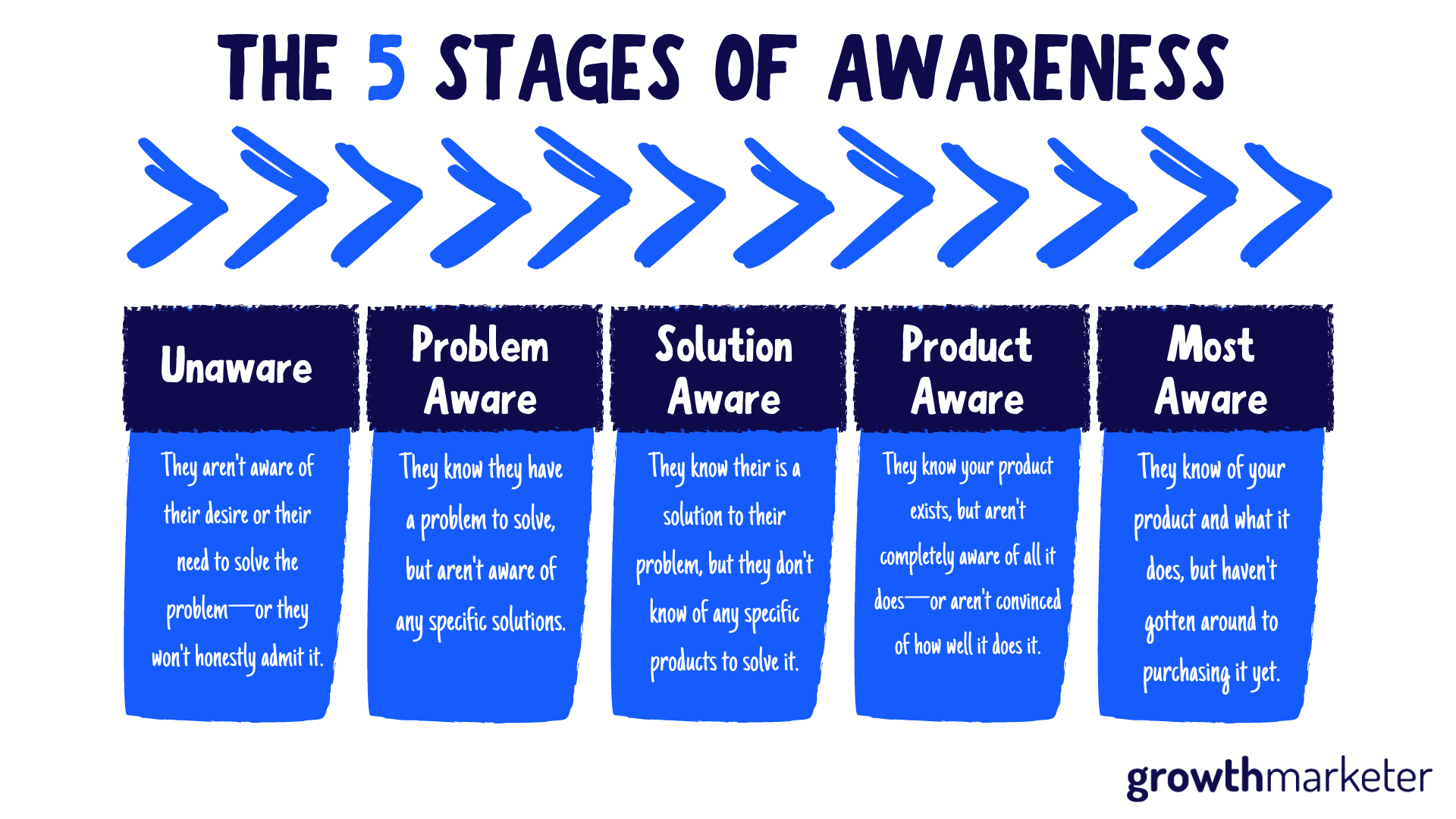
Here’s a more precise breakdown of each stage:
Stage 1: Unaware
Just as it sounds, prospects at this stage are unaware that they have a pain or problem to solve.
As noted by Eugene Schwartz in Breakthrough Advertising, “The prospect is either not aware of his desire or his need—or he won’t honestly admit it to himself without being lead into it by your ad—or the need is so general and amorphous that it resists being summed up in a single headline—or it’s a secret that just can’t be verbalized.”
Finding examples of completely “unaware” marketing copy isn’t easy, as in most cases we’re not trying to market to folks who are completely unaware.
But this example below might be written for a somewhat unaware audience. Notice how it is a longer-format ad, with copy that contains questions that lead to a problem. And it concludes with a call-to-action for a simple offer of an invite to a free workshop.
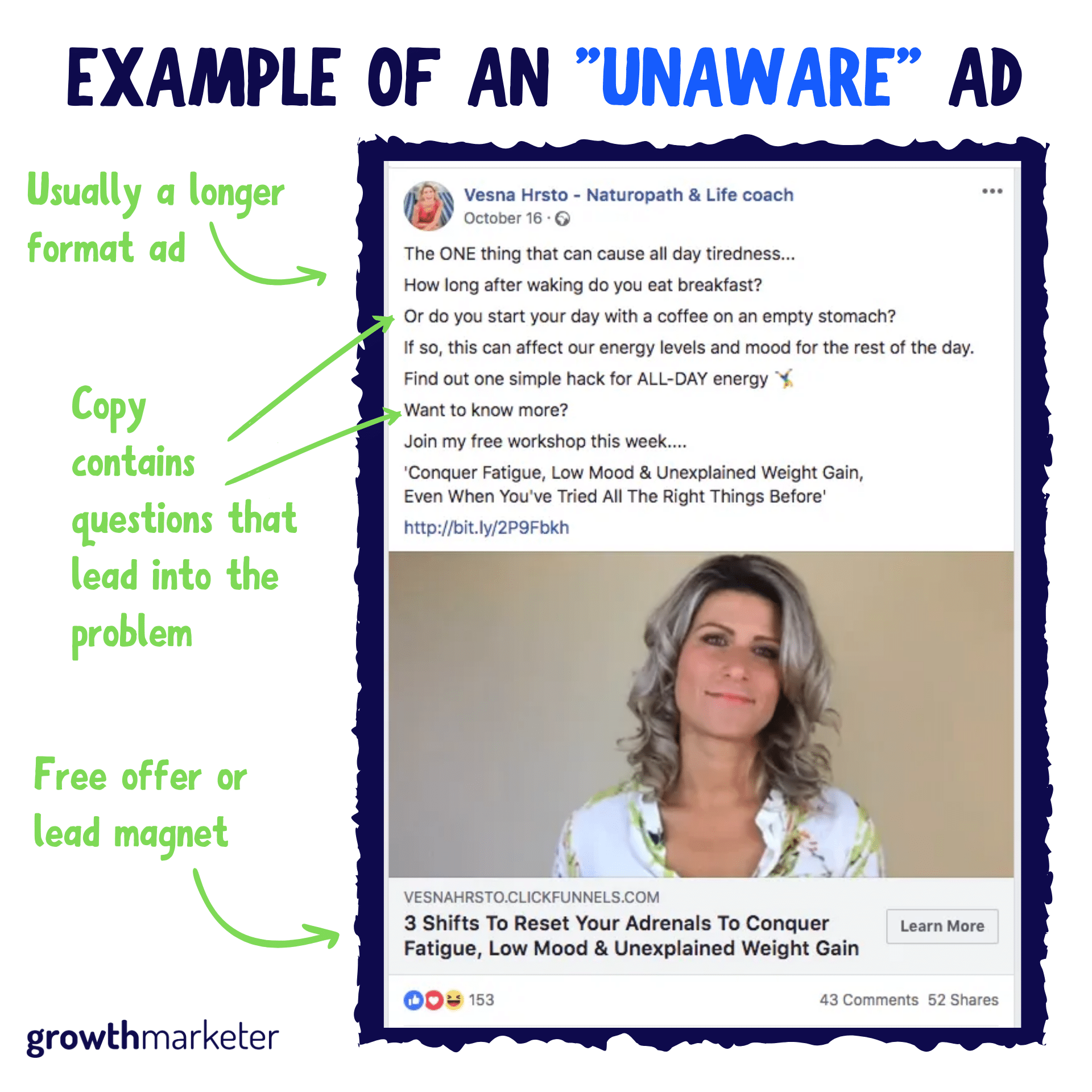
Stage 2: Problem Aware
One step beyond the “unaware” stage is the “problem aware” stage. This is where the prospect realizes that they have a problem, but are not yet aware of solutions to solve it.
Schwartz explains, “The prospect has—not a desire—but a need. He recognizes the need immediately. But he doesn’t yet realize the connection between the fulfillment of that need and your product.”
Problem aware copy tends to focus on the problem (obviously) while building up the desire for something better—the solution—which is usually mentioned towards the end.

Stage 3: Solution Aware
Now we’re getting to the point where the prospect is very much aware of the problem and they’re researching and discovering solutions.
In Breakthrough Advertising, here’s how a “solution aware” prospect is described: “The prospect either knows, or recognizes immediately, that he wants what the product does; but he doesn’t yet know’ that there is a product—your product—that will do it for him.”
Solution aware copy opens with the solution mentioned early on, as that is the clear focus. However, you probably won’t find mention of a price just yet.
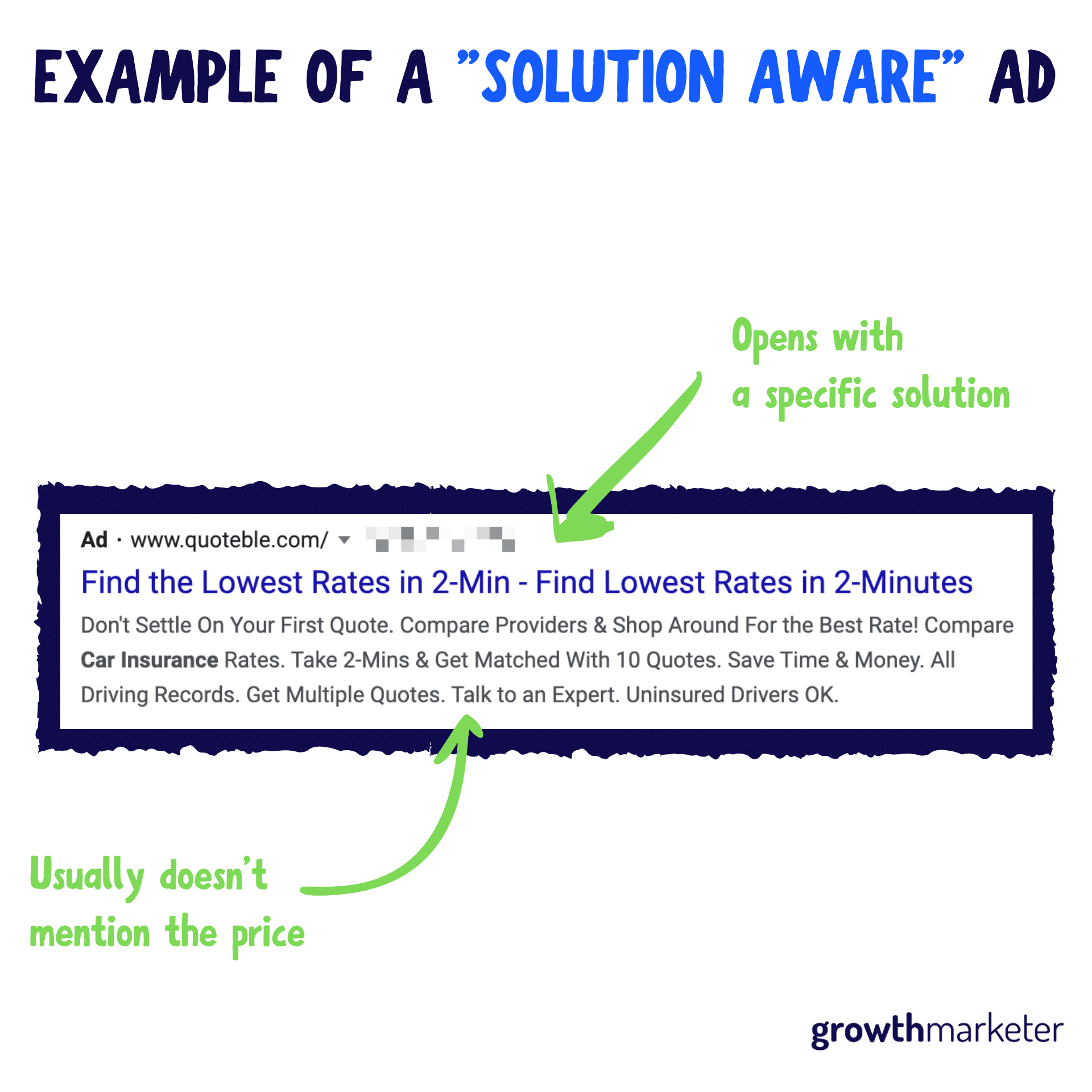
Stage 4: Product Aware
At this point, the prospect is actively researching different products—or services—that will solve their problem. Your product may very well be one of them. But there is still work to be done before the prospect makes a final decision to buy.
As Schwartz says, “Here, your prospect isn’t completely aware of all your product does, or isn’t convinced of how well it does it, or hasn’t yet been told how much better it does it now.”
With product aware copy, the prospect is looking for specificity. Make sure to mention your product features, benefits, and pricing. You may want to include some examples of how it is different from the competitor’s products as well. And this is where you can truly leverage urgency.

Stage 5: Most Aware
Okay, we’ve reached the finish line—almost. At the “most aware” stage, the prospect is pretty much ready to make a decision and buy, but they probably just need something to push them over the goal. Or maybe they aren’t sure where or how to get your product. Or maybe it’s just on the backburner to be purchased at a later time.
In Breakthrough Advertising, the author describes this stage as follows: “The customer knows of your product—knows what it does— knows he wants it. At this point, he just hasn’t gotten around to buying it yet.”
In this final example, note the simplicity of this “most aware” ad. By now, you’ve likely already seen the brand and product before, so there’s no need to go into detail. Retargeting ads are very often written and designed in this simple style.
One other thing “most aware” copy contains is a very direct call-to-action, since now it’s all about getting you to make that final push towards taking action.
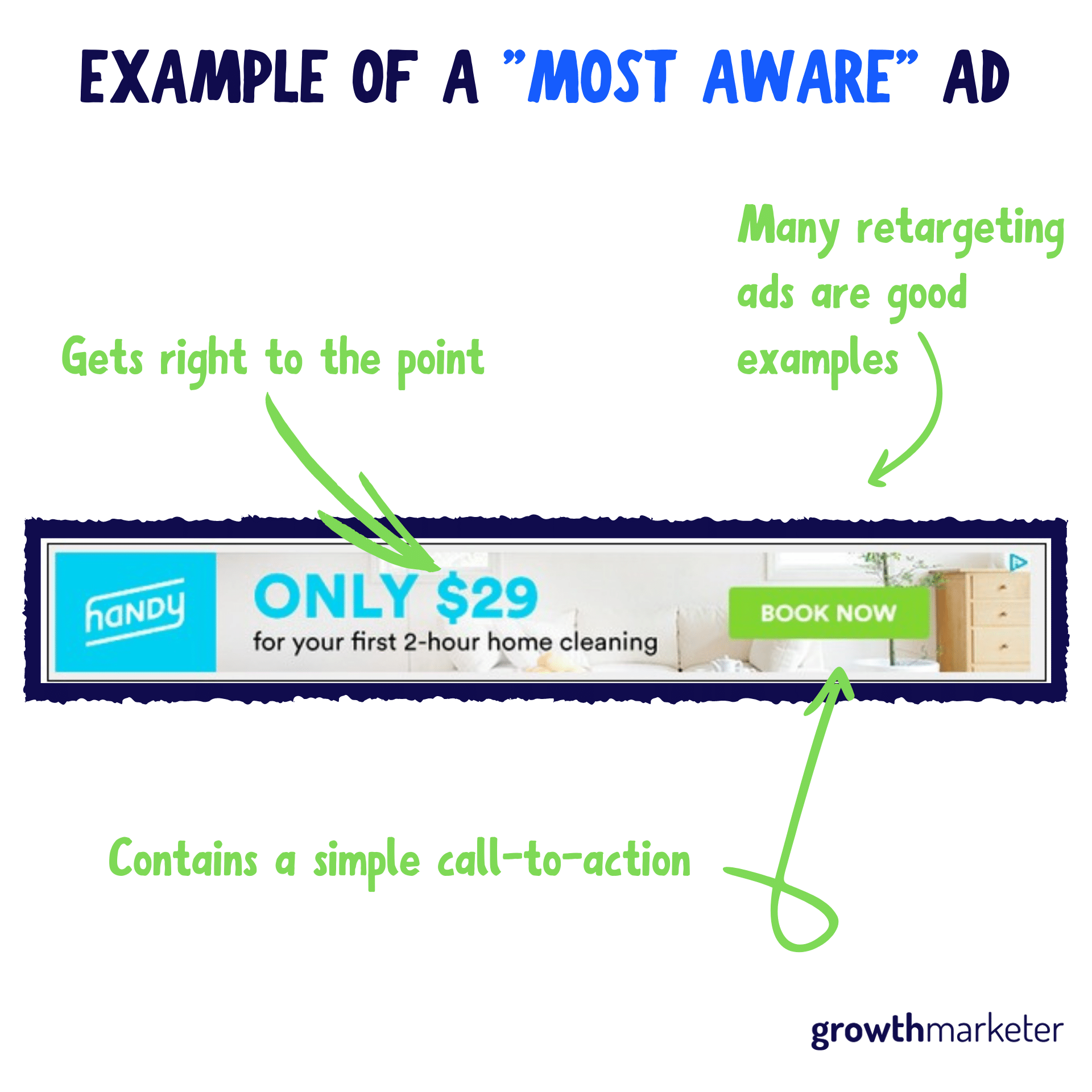
Putting the stages into practice
Now that you’re familiar with the 5 Stages of Awareness and where this concept originated, it’s time to put it into practice with your own marketing campaigns. But how?
The basic idea is to be mindful of each stage and try to match your overall marketing messaging to the stage that your prospect is currently in while trying to move the prospect to the next stage.
It may sound complicated, but really it’s just what marketing has always been about at its most foundational level.
Again, we return the Breakthrough Advertising for some final thoughts on this point:
Advertising is salesmanship in print. Therefore, above everything else, advertising is the literature of desire. It is society’s encyclopedia of dreams . . . our twentieth-century Wish Book. Advertising gives form and content to desire. It provides it with a goal. These desires, as they exist in the mind of your prospect today, are indistinct. They are blurs—hazy, ambiguous, not yet crystallized into words or images. In most cases, they are simply vague emotions, without compulsion or direction. And as such, they have only a fraction of their true potential power. Your job is to fill out these vague desires with concrete images—to show your prospect every possible way that they can be fulfilled—to multiply their strength by the number of satisfactions that you can suggest to achieve them.
Eugene Schwartz, Breakthrough Advertising
Interesting to note, as your prospect moves through the stages, the marketing or “selling job” actually gets easier. Schwartz states, “In its natural development, every market’s awareness passes through several stages. The more aware your market, the easier the selling job, the less you need to say.”
So another key takeaway here is that as you deploy the 5 stages of awareness in your marketing copy, you won’t have to use as much copy for prospects who are already in the latter stages.
Additional resources to explore
If you found this topic intriguing, I first recommend that you find a copy of Breakthrough Advertising and read it to learn about the 5 stages of awareness directly from the source.
The book is very difficult to find at a reasonable price in stores, however, you can pick up a printed copy here from Brian Kurtz who holds the exclusive rights to Schwartz’s masterpiece.
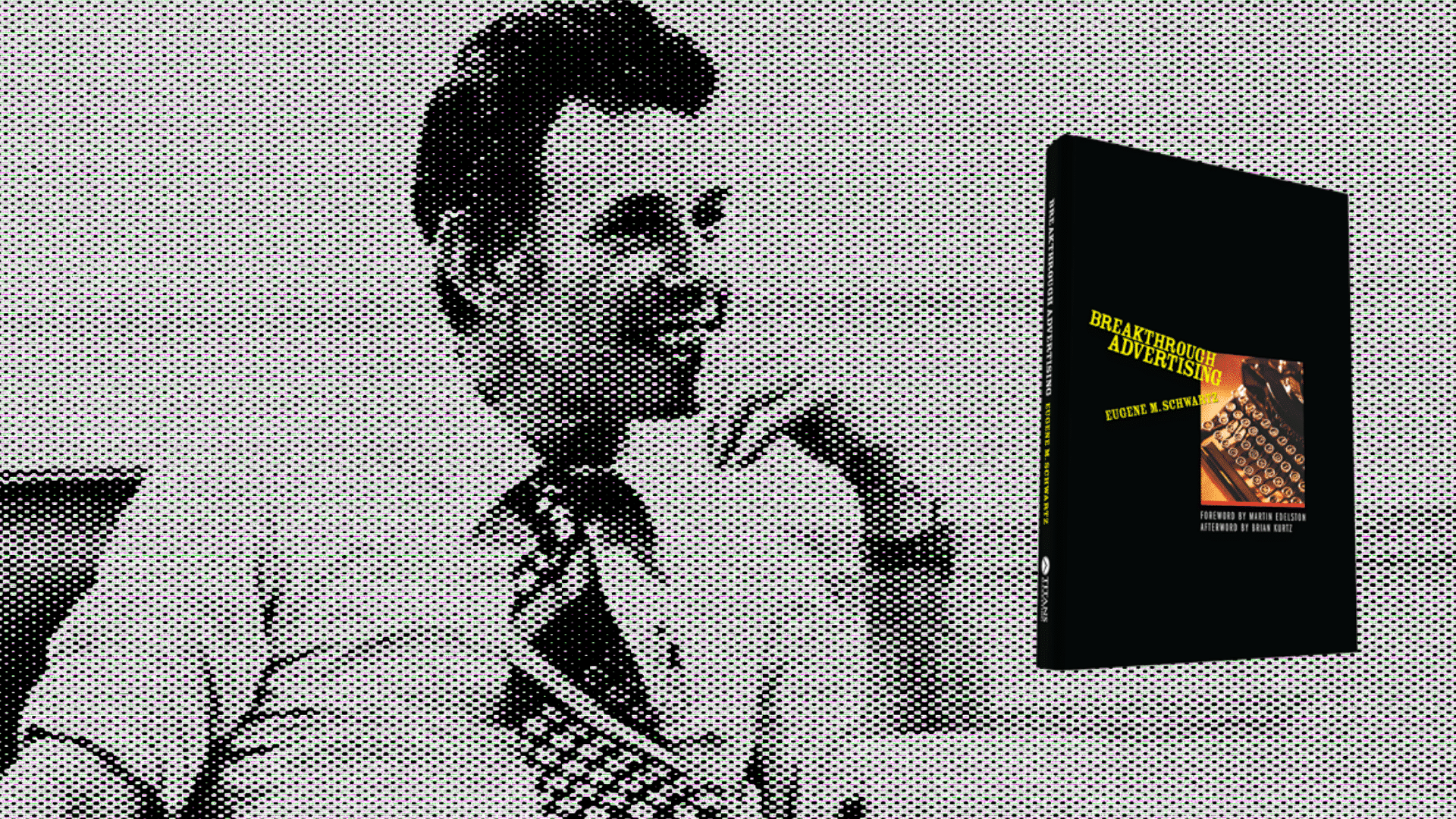
Next, you may find some of these other articles on this topic useful:
Joanna Wiebe from Copyhackers answered the question, “How long should your pages be?” and gave some helpful examples of the stages of awareness in practice.
Benyamin Elias created a detailed guide on the ActiveCampaign blog with several ready-to-tweet takeaways and examples.
If you found this article helpful, please consider sharing with your friends and colleagues on Twitter.
What are the "5 stages of awareness" and why should marketers care?
— Nicholas Scalice 🚀 (@nscalice) January 18, 2021
I put together a detailed overview (with examples)
Thread 🧵
And of course, if you have any questions, I encourage you to get the conversation going. You can reply to the thread above and I’ll respond directly.
